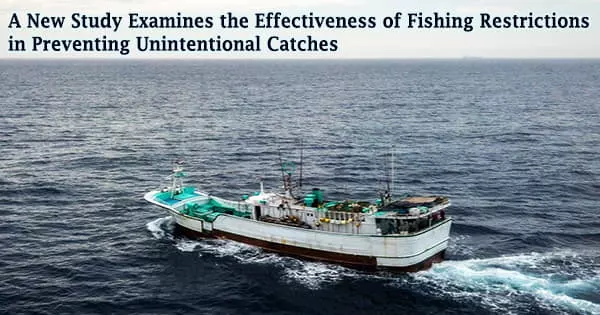One of the most significant obstacles to making fisheries more sustainable around the world is the accidental capture of sharks, seabirds, marine mammals, sea turtles, and other creatures in fishing gear. Marine protected areas, which are regions of the ocean set aside to maintain biodiversity, are utilized, among other things, to limit the unintentional capture of such animals.
Many countries are pushing for the protection of 30% of the world’s oceans from all forms of exploitation, including fishing, by 2030. A recent study led by the University of Washington looks at how effective fishing closures are at reducing accidental catch, based on this suggestion.
Permanent marine protected areas, according to researchers, are a very inefficient approach to safeguard marine species mistakenly trapped in fisheries. It is far more effective to use dynamic ocean management to change the pattern of closures when incidental catch hotspots shift. The findings were reported in the Proceedings of the National Academy of Sciences on January 17th.
“We hope this study will add to the growing movement away from permanently closed areas to encourage more dynamic ocean management,” said senior author Ray Hilborn, a professor at the UW School of Aquatic and Fishery Sciences.
“Also, by showing the relative ineffectiveness of static areas, we hope it will make conservation advocates aware that permanent closed areas are much less effective in reducing accidental catch than changes in fishing methods.”
Devices that keep marine turtles away from shrimp fishing, or streamer lines on boats to keep seabirds from getting tangled in fishing lines, are examples of these tactics.
We hope this study will add to the growing movement away from permanently closed areas to encourage more dynamic ocean management. Also, by showing the relative ineffectiveness of static areas, we hope it will make conservation advocates aware that permanent closed areas are much less effective in reducing accidental catch than changes in fishing methods.
Ray Hilborn
The international team of researchers looked at 15 fisheries around the world, including Californian swordfish, South African tuna, and Alaskan pollock, and compared what would happen to the targeted fish and bycatch species if 30% of fishing grounds were permanently closed versus dynamic management.
Dynamic management, in practice, monitors real-time bycatch data and closes smaller regions that can shift from year to year depending on which species are most impacted.
One criticism of permanent marine protected areas is that many of the species they are designed to preserve, such as marine mammals, turtles, and seabirds, move about and may eventually leave the protected region.
The study discovered that restricting fishing in 30 percent of a defined region reduced bycatch by 16 percent on average across all fisheries tested. Bycatch was reduced by up to 57 percent in dynamic closed areas covering the same fraction of the ocean.
“We found we can significantly reduce bycatch without decreasing the catch of target species by closing small fishing areas that can move year to year,” said lead author Maite Pons, an independent fisheries consultant based in Uruguay who completed this work as a UW postdoctoral researcher.
“This dynamic approach is increasingly valuable as climate change drives species and fisheries into new habitats, altering these interactions.”
The authors acknowledge that the purposes of different maritime protected areas varied and that static closures may be more successful and easier to enforce if the primary goal is to safeguard a crucial ecosystem, a biodiversity hotspot, or a unique feature.
In this way, they stated, all conservation aims should be taken into account when deciding which sorts of ocean protections to implement.
“I hope this study encourages everyone to consider how best to reduce bycatch and protect marine ecosystems,” Hilborn added. No outside funding was used in this research.
















